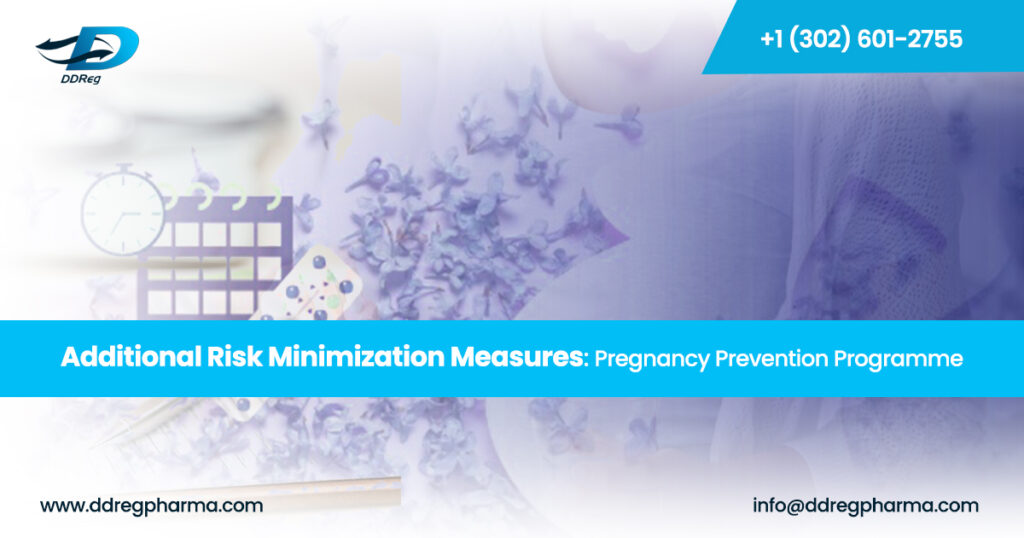Additional Risk Minimization Measures
For medicinal products for which the Benefit-Risk ratio is smaller, risks posed by the product are potentially serious, and routine RMMs are considered to be insufficient, additional RMMs are required for the safe and effective use of a medicine.
These include:
- Educational material i.e., Dear Dr. Letters, HCP brochures, Patient brochures, etc.
- HCP Counselling for pregnancy & contraception awareness
- Pregnancy programs i.e., pregnancy registration, detection, outcome, and follow up
- Controlled access programs, and
- other measures such as controlled distribution systems, direct healthcare professionals communication
Pregnancy Prevention Program
These include:
- Use of Product labels i.e., SPC & PIL
- Risk information on packs
- HCP Counselling for pregnancy & contraception awareness
- Pregnancy programs i.e., pregnancy registration, detection, outcome, and follow up
In March 2022, the European Medicines Agency published a draft guidance on GVP guidelines for PPP that highlights the criteria for a PPP and risk minimization measures that constitute a PPP [6]. Indeed, the most recent scientific evidence for teratogenicity should form the basis of conducting a PPP.
Implementation
- Rationale
- Objectives & description of how the aRMM addresses the safety issue
- Description of the aRMM as well as tools that will be used
- Proposal for implementing the aRMM
- Plan for evaluating how effective the aRMM was with respect to the health outcome
Additional Risk Minimization support with DDReg
ICSR processing & reporting, medical & safety writing, and aggregate reports are some of the key components of the drug safety and pharmacovigilance portfolio at DDReg. As part of its risk management capabilities, the safety team evaluates product risks and developing & managing risk management plans (RMPs). Additionally, the team has experience in creating and implementing aRMMs including PPPs, product labels (SPCs & PLs), educational material, HCP counseling and more in accordance with competent authorities. Having worked & gained rich experience in drug safety & risk management, DDReg has automated its processes for Risk minimization with use of latest technology. DDReg now has capability of developing customized tech based aRMM programme.
References and Further Reading
[1] European Medicines Agency. Guideline on Good Pharmacovigilance Practices (GVP) Module XVI-Risk minimization measures: selection of tools and effectiveness indicators. 2012
[2] FDA. Labelling and prescription drug advertising: content and format for labelling for human prescription drugs. Fed Regist 1979; 44: 37434-67
[3] Abroms L, Maibach E, Lyon-Daniel K, et al. What is the best approach to reducing birth defects associated with isotretinoin? Plos Med 2006 Nov; 3: 1978-83
[4] Autret-Leca E, Kreft-Jais C, Elefant E, et al. Isotretinoin exposure during pregnancy: assessment of spontaneous reports in France. Drug Saf 2010; 33: 659-65
[5] Schaefer C, Meister R, Weber-Schoendorfer C. Isotretinoin exposure and pregnancy outcome: an observational study of the Berlin Institute for Clinical Teratology and Drug Risk Assessment in Pregnancy. Arch Gynecol Obstet 2010; 281: 221-7
[6] European Medicines Agency. Guideline on Good Pharmacovigilance Practices (GVP) Module AVI Addendum III- Pregnancy prevention programme and other pregnancy-specific risk minimization measures. 2022

